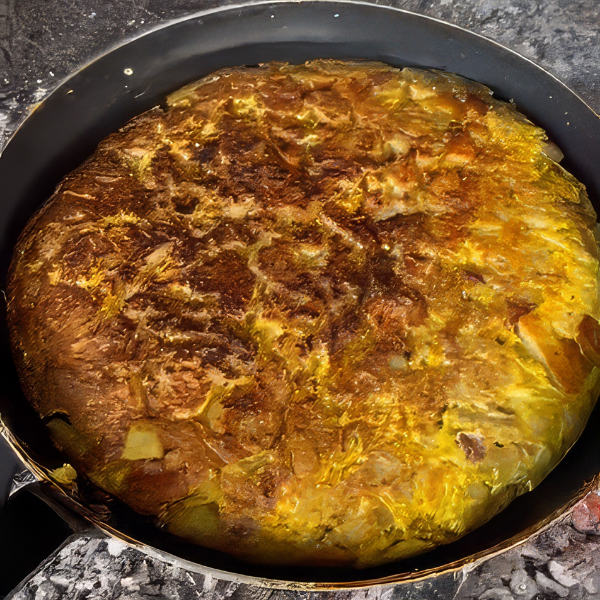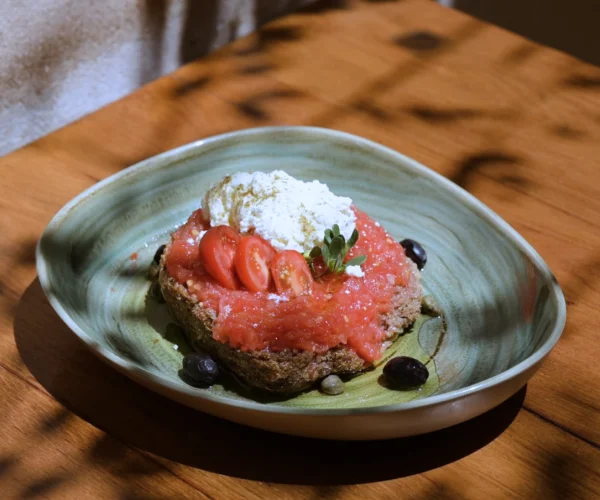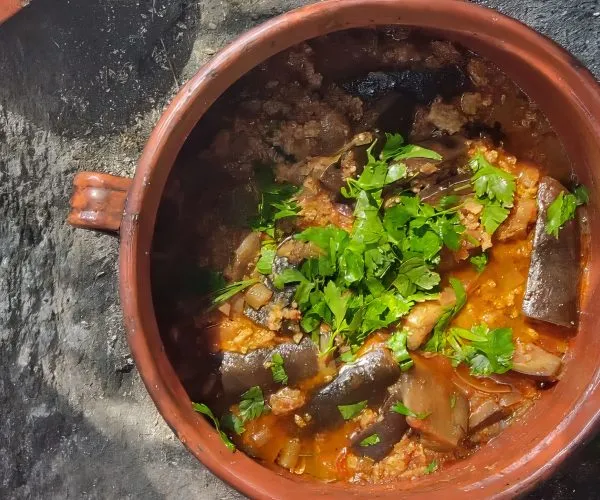Sfouggato (Greek frittata)
What you often enjoy and casually call an omelet, is the “ace up the sleeve” of the Cretan table.
Sfouggato (Greek frittata) vs Omelete!
Ingredients
- Sfouggato: Eggs do not dominate. It includes vegetables, wild greens or potatoes, and often cheese or finely chopped meat. The ratio is usually 30% eggs to 70% other ingredients.
- Omelet: Typically made mostly of eggs. If it includes extras like cheese or deli meats, the ratio is usually 70% eggs to 30% other ingredients.
Texture
- Sfouggato: Puffy, thick, and fluffy.
- Omelet: Thin and soft.
Serving Style
- Sfouggato: Cut into pieces like a pie.
- Omelet: Usually served whole, folded, and made for one.
When to Eat It
- Sfouggato: Tastes great even the next day, hot or cold.
- Omelet: Should be eaten right away once it cools, it can become rubbery.
Long before the French word omelet made its way into our kitchens, Greeks had already given a name to this delicious union of eggs and vegetables: Sfouggato.
The name comes from the ancient Greek word sfoggos, meaning “sponge”perfectly describing the light and fluffy texture the beaten eggs take on when combined with vegetables.
The Ace Up the Sleeve of the Cretan Table
If you want to understand seasonality, home cooking, and the art of spontaneous hospitality, just follow the trail of sfouggato in Cretan homes all year round. It’s proof that creativity in Cretan everyday cooking never runs out.
Seasonality: Wild greens, cauliflower, and broccoli in winter; wild asparagus and artichokes in spring; zucchini, zucchini flowers, eggplant, green beans, and greens (vlita) in summer, potatoes, spinach, and tsimoulia (wild leafy greens) in autumn. All find their way into the Cretan frying pan and are lovingly combined with eggs. A few ingredients, a single pan, simple steps, and a bit of time—that’s all it takes to make something deeply flavorful and loved by all. Served on its own with a fresh salad or as a side on a larger table, it’s always a winner.
* Wild greens in Crete are a world of their own and sfouggato is one of the best ways to enjoy them. Sweet greens like vrouves (mustard greens) or bitter ones like pikrastacha pair beautifully with eggs. Some wild greens are at their best when cooked with just the right partner: avronies (wild vine shoots) with onion, or askolymbroi (wild artichoke thistle) with garlic.
Fighting Food Waste Have a handful (hahalia) of leftover vegetables, greens, or potatoes Not enough to make a full dish. That’s what sfouggato is for! Even leftovers from other meals can be turned into a new, delicious dish. In the kitchens of our grandparents and thankfully still in many homes today, especially in rural Crete nothing goes to waste.
Treat: Cretans are known for putting together generous meals at a moment’s notice and rightly so. A few fresh vegetables from the garden, a dakos, some olives, big chunks of local cheese, and a glass of raki buy you 15–20 minutes. That’s just enough time to make a sfouggato from whatever’s in the house that goes with eggs. It’s the go-to cooked dish for surprise visitors, the ace up the sleeve of any truly hospitable Cretan home.
________________________________________
Glossary
- Hahalia: A handful (of mixed ingredients)


